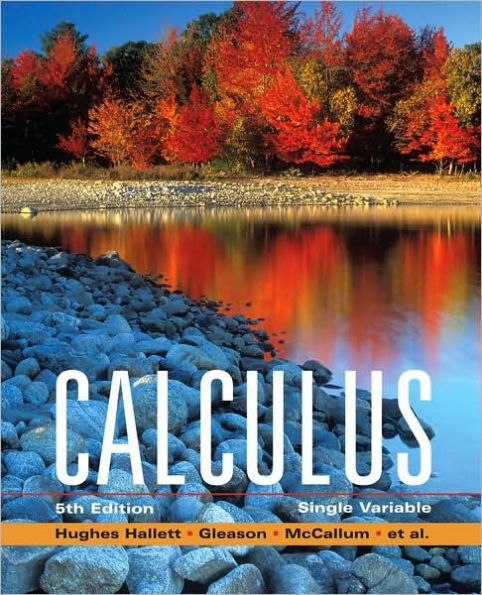Calculus: Single Variable / Edition 5 available in Paperback, Other Format

Calculus: Single Variable / Edition 5
- ISBN-10:
- 0470089156
- ISBN-13:
- 9780470089156
- Pub. Date:
- 12/03/2008
- Publisher:
- Wiley

Calculus: Single Variable / Edition 5
Buy New
$232.75Buy Used
$218.75
-
SHIP THIS ITEM— This item is available online through Marketplace sellers.
-
PICK UP IN STORECheck Availability at Nearby Stores
Available within 2 business hours
This item is available online through Marketplace sellers.
-
SHIP THIS ITEM
Temporarily Out of Stock Online
Please check back later for updated availability.
This item is available online through Marketplace sellers.
Overview

Product Details
| ISBN-13: | 9780470089156 |
|---|---|
| Publisher: | Wiley |
| Publication date: | 12/03/2008 |
| Edition description: | Older Edition |
| Pages: | 736 |
| Product dimensions: | 8.50(w) x 10.40(h) x 1.20(d) |
About the Author
Deborah Hughes-Hallett is Adjunct Professor of Public Policy and Professor of Mathematics at the University of Arizona. She graduated from Cambridge University in England and has taught at Middle East Technical University in Ankara, Turkey. Her work is on strategies to improve the teaching of mathematics, and she is interested in promoting international cooperation between mathematicians. She has served on committees for the National Academy of Sciences and organized three international conferences on the teaching of mathematics. She is a fellow of the American Advancement of Science and the author or coauthor of seven books, which have been translated into several languages. Her work has been recognized by prizes from Harvard, Arizona, the Association for Women in Mathematics, and the Mathematical Association of America.
